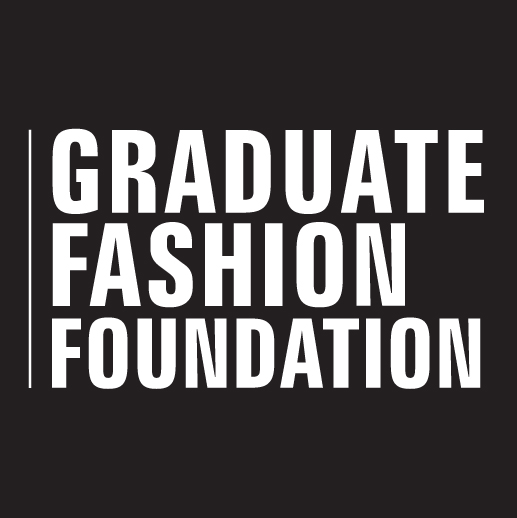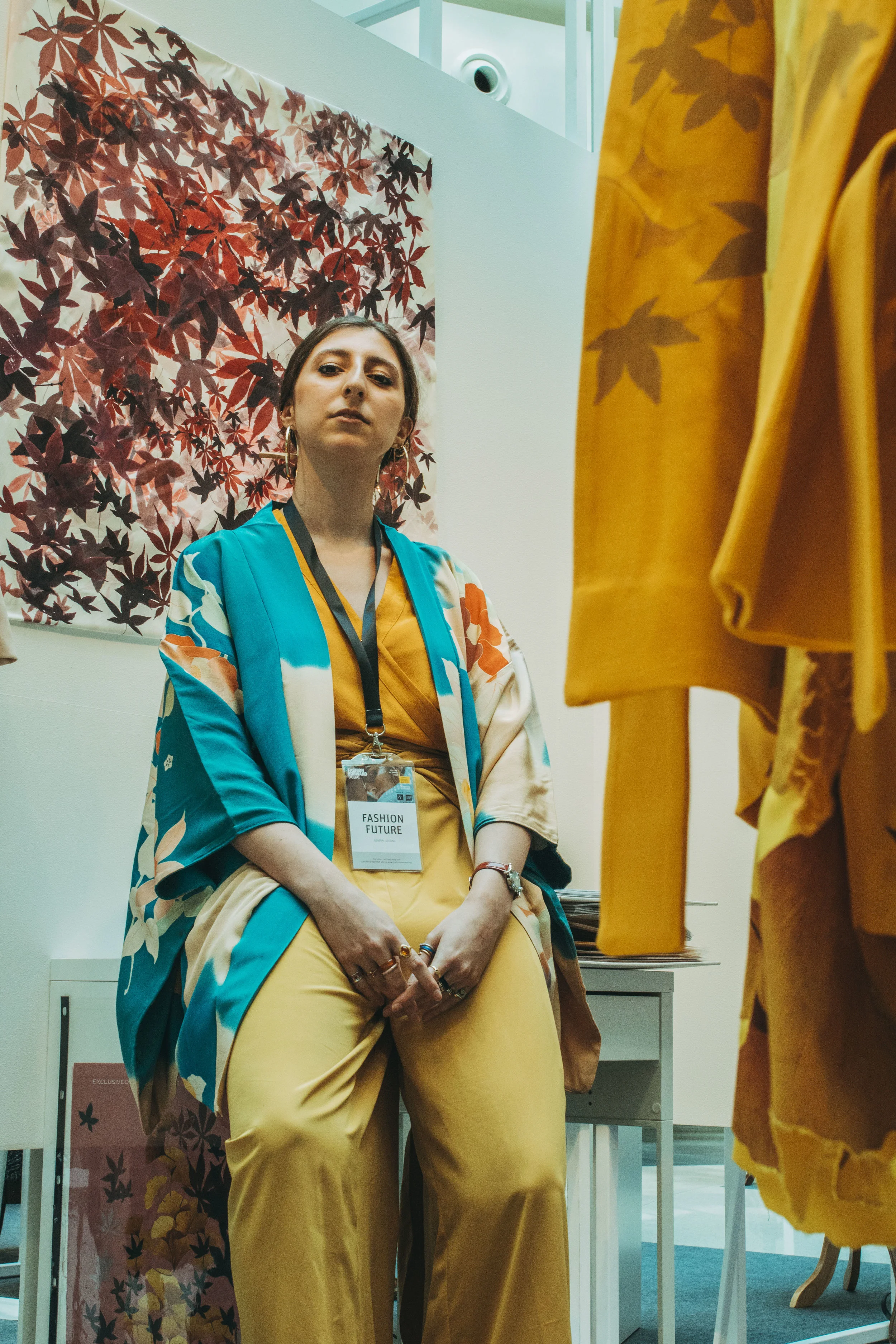Irene D'Antonio's award winning collection found inspiration in the refinement of Japanese kimonos, translating ancient cultural references to nature into creative designs. After showing in Dubai as part of Fashion Forward Dubai, and completing a design position at M&S, Irene is now preparing to relocate to Japan.
Congratulations on graduating, showcasing your collection at GFW17 and winning the M&S Womenswear Award! How was the entire experience for you?
Thank you very much! It was a surreal experience, completely exhausting but I loved it. At the time I was still working on the collection, hemming and stitching the last couple of things backstage before the Edinburgh show. After that I went to as many shows and talks as I could, it's easy to get wrapped up in your own world working so many hours on one thing, so it was great to have access and see the work of so many graduates gathered in one venue.
How did studying at Edinburgh College of Art prepare you for working in the competitive fashion industry?
I feel Edinburgh prepared me very well in terms of presenting my work professionally, we had weekly (more often if needed) meetings with at least one tutor and five or six larger presentations with the whole design staff, discussing the work presented (usually toiles and fabric manipulations). This also meant I had to be very organised and prepared before hand in order to showcase as much as possible in a limited amount of time, concisely and cohesively. Teamwork was also important, in the years running up to final year we had several group projects, and access to a variety of facilities throughout the University, meant I could develop skills in different areas (for example laser cutting, knitting and printing).
Since graduating, you have also showcased your stunning collection at Dubai Fashion Forward. How was your time in Dubai?
It was fabulous, lovely to spend time with and get to know better the other graduates form GFW. Exciting seeing what the fashion retail space in Dubai provides for the consumer and what the Asian customer demands are compared to a European market. I was also able to make some great contacts and practice presenting my work in a new setting.
Your collection was chosen to be showcased at GFW’s Houses of Parliament event. What was this experience like for you?
Very inspiring, being able to interact and connect with people from the industry, working in a variety of positions. Understanding the roles people play in a company and the opportunities out there for graduating designers.
The collection conveyed a beautiful aesthetic achieved through vivid colour and prints. What was the primary inspiration behind these pieces?
My primary inspiration behind the prints in my collection was Japan, in particular the study of prints and colours used in kimonos. These are seasonally dictated in Japanese design and have been refined over centuries. I utilised leaves (maple and ginkgo) as the majority of pictures depicted in kimonos and Japanese art are taken from nature, creating a floral print with a freshness to it. Also looking at the texture of kimono fabrics, how the different techniques and materials create a combination of textures that I re-created in my fabric. I was quite obsessive in my research, thinking about the materials, colours and composition balance in each of my pieces, building and layering them to re-create fascinating aesthetic of kimono.
Since winning the M&S design award, have you been working with the retail giant?
Yes, I have been working at M&S since September within one of their product design teams. I stayed with them until the end of February, giving myself time to prepare for my move to Tokyo in March as I will start an MA in Fashion Design there in April.
If you could choose one designer or brand to collaborate with, who would it be and why?
I would love to collaborate with brands that have a strong identity, design signature and are experts, specialised in their discipline such as Mackintosh or Borsalino (hats); or working alongside traditional master artisans (Durata ceramics, Murano glass). I find fascinating understanding what makes a product special, asking myself where can things be pushed or innovated to make the product still appeal to the core customer but also offer something new. As well as being deliriously excited to be part of a conversation with the exceptional makers of these products, seeing their passion and evolving together their creations, for whom I have great respect and admiration. It would be an honour.
Fashion is beginning to focus on sustainability, as climate change becomes more and more of a concern for the younger generation. Do you try to incorporate environmentally conscious techniques into your work?
Sustainability is something that I think all designers across different areas should constantly think about when designing, so of course I include myself in that. Although my designs at the moment do not have sustainability to their core (such as Maddie Williams' designs), I continually reduce waste and regularly research and source recycled fabrics whenever possible, or materials from sustainable suppliers. Also thinking about utilising a balanced range of materials is important, for example, although cotton is eco-friendly, it would be unsustainable to manufacture a collection completely from it as it uses a huge amount of water. There are more and more high quality but affordable fabrics that are sustainable or eco-friendly coming on the market, which I will definitely make use of more and more in future projects.
Where would you like to be in 5 years time?
I would like to be working for a fashion design company or designer in Japan, while at the same time designing a yearly collection for my own label or doing collaborations with artists in different fields.
If you could give some advice to our graduates showcasing this year what would you say?
Practice presenting and know your collection well, as you will need to explain it clearly succinctly. Love the clothes you make (which doesn't mean you will love every step of the process in the making of them) and work a little harder everyday, pushing yourself whilst keeping a look out for the approaching finish line. Also in the run up to GFW things will go wrong all the time, sometimes several times a week, so it is completely normal to feel frustrated become upset. When that happens don't lose control, as that will only waste time and add to the problems, break down your problem into several parts and fix as many as you can. Problem solving is a vital skill in a high maintenance industry like fashion and the more practice you have the better.
Interview by Annabel Waterhouse-Biggins







